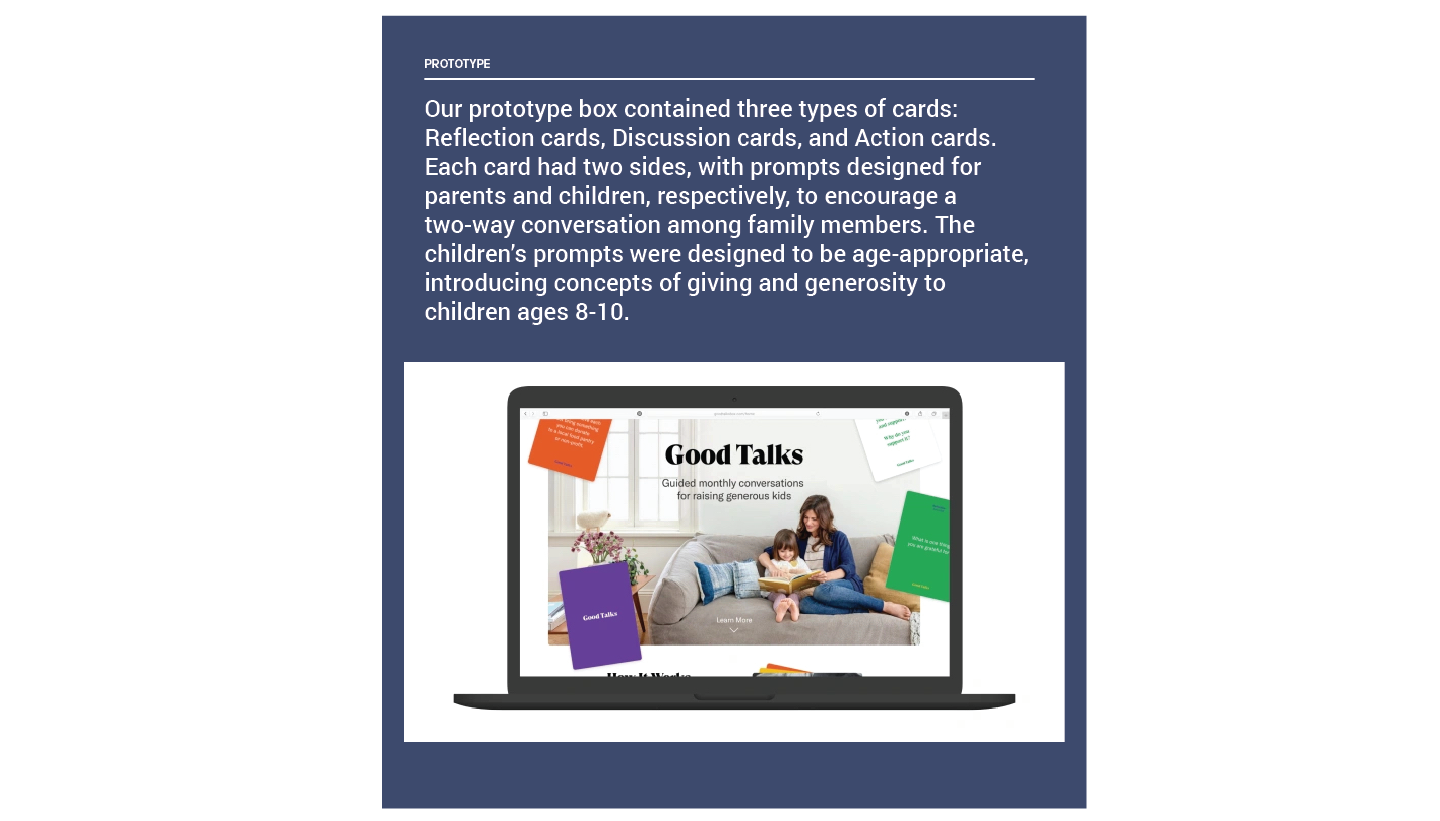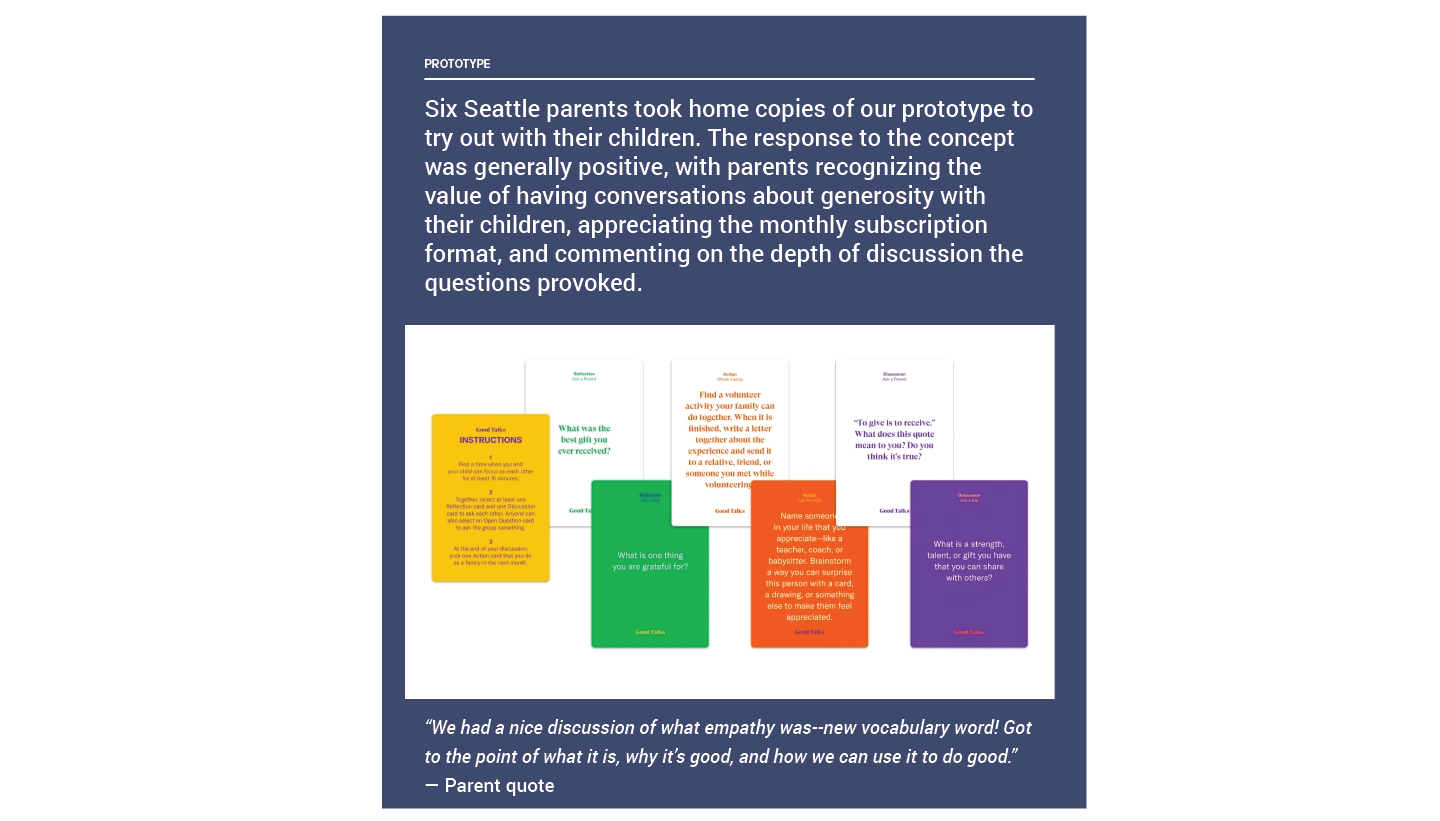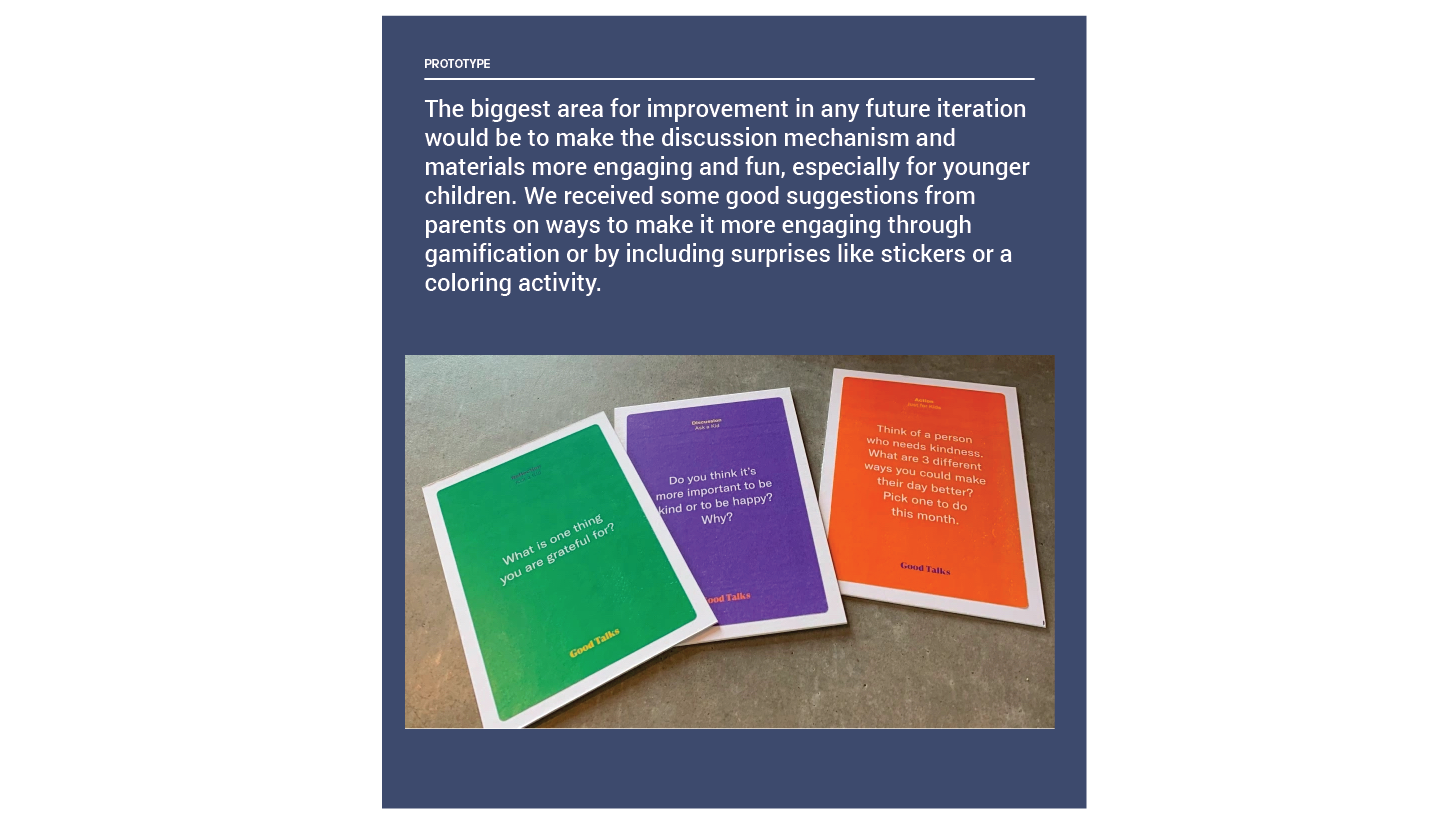Generous Conversations



Better Giving Studio developed this concept during a product sprint led by Intentional Futures and the Women’s Philanthropy Institute at Indiana University, which focused on leveraging giving research and translating it into high level product concepts.
The Opportunity
Participation in donating to charity is declining across most generations. An online survey of 1,339 U.S. donors conducted by Blackbaud found that each generation surveyed, with the exception of Baby Boomers, has experienced a decline in the share of members who report giving to charity. The study’s findings agree with a growing body of research suggesting that, even as total dollars donated is growing, the population of givers is contracting. This shrinking population of givers could have huge implications, especially with older generations expected to transfer an estimated $59 trillion in wealth to younger generations in the coming years.
Researchers are also sounding the alarm about an apparent decline in empathy. A meta-analysis of studies of American college students found that today’s students score lower on measures of the critical components of empathy compared to college students in the late 1970s and early 1980s. The decrease has primarily happened since 2000 and shows up in tests designed to assess feelings of sympathy for the misfortunes of others and tendencies to imagine other people’s points of view. This is noteworthy because higher levels of empathy are linked to prosocial behaviors such as volunteering and donating to charity.
To counter these trends, Generous Conversations would provide tools to help parents intentionally build empathy and inspire generosity in their children.
The Concept
A study of over 900 children ages 8 and older found that role-modeling charitable giving is not nearly as effective at inspiring generosity as discussing philanthropic giving. In fact, children who have conversations with their parents about donating to charity are 20% more likely to give to charity themselves. This is true for children in families of all income levels and across gender, race, and age groups.
The set of tools and resources that Generous Conversations proposes would provide families with guidance on facilitating conversations about giving. The goal should be to design an activity that will build empathy, promote generosity, and encourage parents and children to share their charitable values with each other.
It’s important that these discussions stretch beyond traditional charitable giving and formal volunteering to capture informal volunteering (helping a neighbor or stranger) and other helping behaviors. Time diary studies in the US, UK, and France show that informal volunteering is actually the most common form of helping behavior. Results showed that more people across the three countries reported having helped a stranger in the last month (an average of 45%) than those who had done any formal volunteering (20%).
Having meaningful conversations about these topics can be daunting for parents. Any product about giving conversations should include elements intended to make the conversation engaging and interesting for children, either through visual design or gamification. Conversation topics should include generosity, charitable giving, and volunteering to reflect a holistic understanding of prosocial behaviors. It’s also important to include advice for parents on how to facilitate the conversation, with a preference for exchanges that are not mediated exclusively by technology.
Ideally, this would create a two-way conversation, with children and parents both playing a role in asking and answering questions. If possible, a solution should include action steps the family can take together to turn the discussions into practice. Volunteering together or picking a charity to donate to on a holiday or birthday are two examples.
In order to test the idea, Better Giving Studio created a monthly subscription concept called Good Talks — a service delivering discussion prompts to help families have meaningful conversations about generosity. Our prototype box contained three types of cards: Reflection cards, Discussion cards, and Action cards. Each card had two sides, with prompts designed for parents and children, respectively, to encourage a two-way conversation among family members. The children’s prompts were designed to be age-appropriate, introducing concepts of giving and generosity to children ages 8-10.
Six Seattle parents took home copies of our prototype to try out with their children. The response to the concept was generally positive, with parents recognizing the value of having conversations about generosity with their children, appreciating the monthly subscription format, and commenting on the depth of discussion the questions provoked. The biggest area for improvement in any future iteration would be to make the discussion mechanism and materials more engaging and fun, especially for younger children. Future iterations could include gamification tactics, or simple additions like stickers or coloring activities.
This concept may be adopted, remixed, or used as inspiration for your own innovation efforts, by following these attribution guidelines.
Explore Further
This concept can be adopted, remixed, or used as inspiration for your own innovation efforts. Follow the Creative Commons guidelines below.
